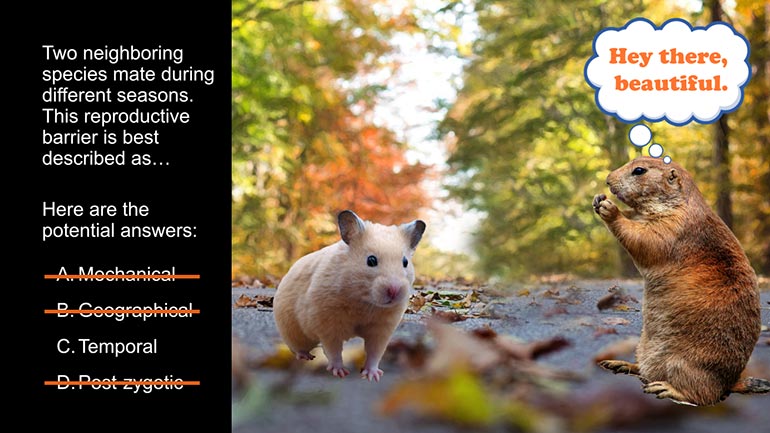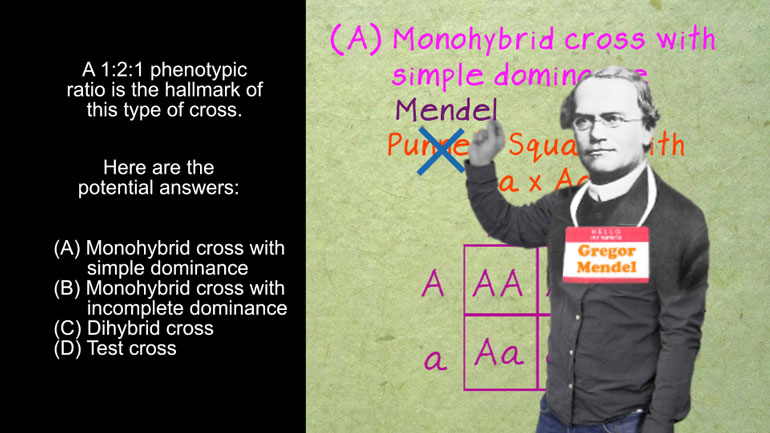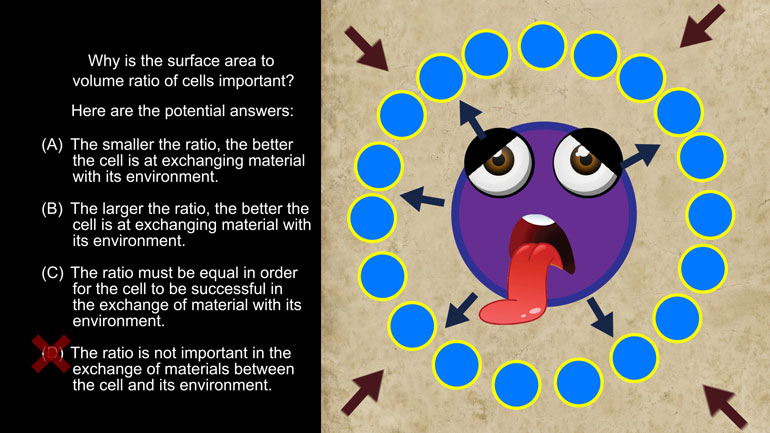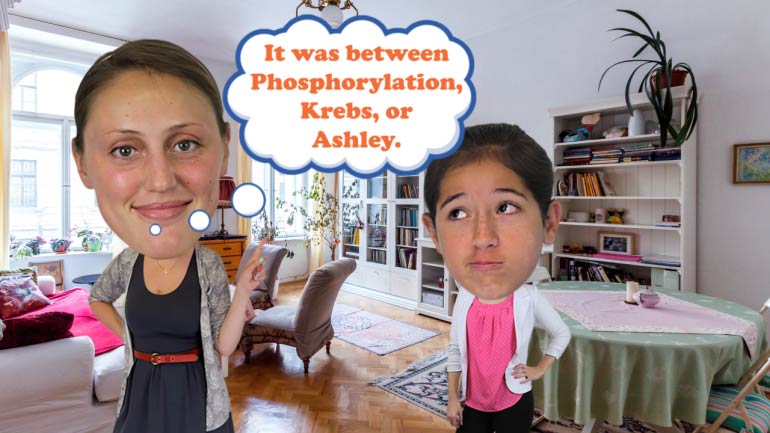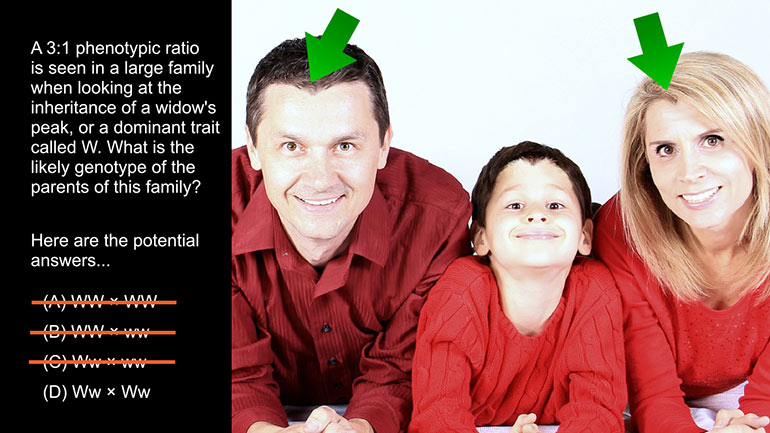ShmoopTube
Where Monty Python meets your 10th grade teacher.
Search Thousands of Shmoop Videos
AP Biology Videos 39 videos
AP Biology: Biological System Interactions Drill 1, Problem 1. Complete the sentence about a saturated fatty acid.
AP Biology: Essential Life Process Information Drill 1, Problem 1. If one parent is heterozygous for the sickle cell trait while the other par...
AP Biology: Evolution Drives the Diversity and Unity of Life Drill 1, Problem 1. The first cells on planet Earth were likely what?
AP Biology 1.4 Essential Life Process Information 43 Views
Share It!
Description:
AP Biology 1.4 Essential Life Process Information. A 1:2:1 phenotypic ratio is the hallmark of what type of cross?
Transcript
- 00:04
Here’s your shmoop du jour, brought to you by Gregor Mendel…
- 00:06
… the father of genetics… [A picture of Gregor Mendel and a DNA helix]
- 00:08
…and noted pea lover.
- 00:12
A 1 to 2 to 1 phenotypic ratio is the hallmark of this type of cross.
- 00:18
And here are the potential answers...
Full Transcript
- 00:19
Let’s use a Punnett Square to figure it out. [A punnett square]
- 00:24
Honestly, we use a Punnett Square to figure everything out.
- 00:26
Although…they’re really not the best for advanced calculus…[Boy attempting to use a punnett square to solve a calculus problem]
- 00:29
Okay, so…keep in mind that incomplete dominance means that a phenotype with a mixed pairing
- 00:34
of genes will display neither the dominant nor recessive trait, but its own unique trait. [Mendel and Punnett stood together discussing the punnett square]
- 00:41
All right…how’s A lookin’?
- 00:43
“Monohybrid cross with simple dominance”.
- 00:45
Well…that cross yields a 3 to 1 ratio.
- 00:48
In other words, any phenotype containing a dominant “A” gene will display that trait. [Mendel crossing out Punnett and replacing it with Mendel]
- 00:53
Which is what makes it “simple dominance,” and that’s not what we’re looking for.
- 00:57
Option C…a Dihybrid cross…examines the phenotypic outcomes of 2 traits, not 1, which
- 01:02
is what a monohybrid cross does.
- 01:04
This yields 16 combinations, not 4…the sum of 1 to 2 to 1.
- 01:09
Way too many combos for our liking, so that’s not the answer.
- 01:12
Buh-bye, C.
- 01:13
How about D, a test cross? [A punnett square with question marks]
- 01:14
A test cross can be used to determine the genotype of a plant or animal. [baby deers in a field]
- 01:19
Think of it as working backwards to see what an organism’s Punnett Square would look
- 01:23
like.
- 01:24
Very useful…and fun, if you’re bored on a train…but it’s not the kind of cross
- 01:27
we’re after.
- 01:28
The correct answer is B, a monohybrid cross with incomplete dominance. [A monohybrid cross punnett square]
- 01:33
Think about the example of human hair. [A woman brushing her hair]
- 01:35
In humans, "S" is for straight hair, while "C" is for curly hair. [A woman with curly hair and a woman with straight her in a hairdressers store]
- 01:39
However, a mixed "SC" will have wavy hair.
- 01:43
Anyway, this is what makes it an example of incomplete dominance, as opposed to simple
- 01:48
dominance…
- 01:49
So, this type of cross yields a 1 to 2 to 1 phenotypic ratio.
- 01:52
Two out of four possible offspring of a monohybrid cross with incomplete dominance will have [B answer circled in green]
- 01:56
a mixed phenotype.
- 01:57
Let’s give it up for Punnett Squares.
- 01:59
Have you ever had more fun in your life? [Punnett telling Mendel to forget about the naming of Punnett Squares]
Related Videos
AP Biology: Essential Life Process Information Drill 1, Problem 1. If one parent is heterozygous for the sickle cell trait while the other par...
AP Biology: Biological System Interactions Drill 1, Problem 1. Complete the sentence about a saturated fatty acid.
AP Biology: Evolution Drives the Diversity and Unity of Life Drill 1, Problem 1. The first cells on planet Earth were likely what?
AP Biology: Free Energy and Molecular Building Blocks Drill 1, Problem 1. Which statement incorrectly describes the properties of water?
AP® Biology: Evolution Drives the Diversity and Unity of Life Drill 1, Problem 2. What was likely the first genetic material?










